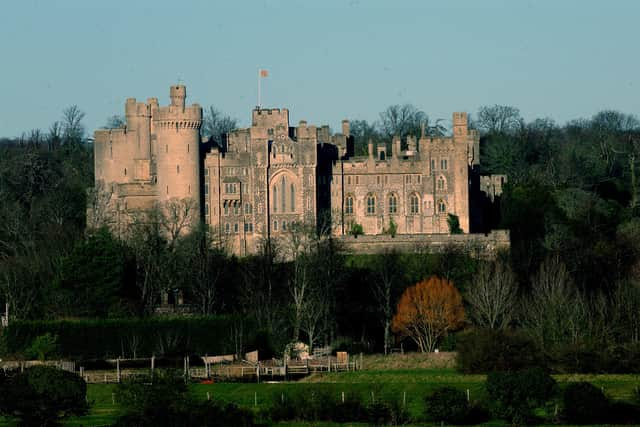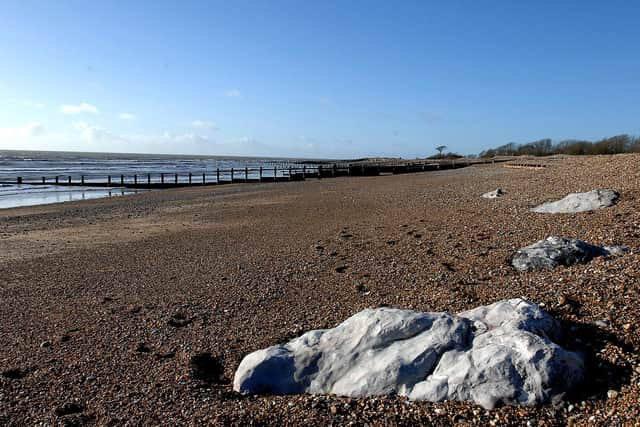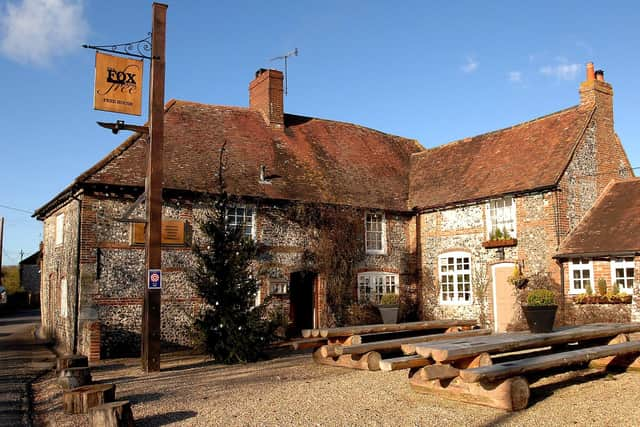Doctor Who filming: When aliens invaded West Sussex for classic Doctor Who stories
and live on Freeview channel 276
The first visit to the area was in March 1967, when the cameras rolled at Gatwick Airport for The Faceless Ones. This adventure, where Gatwick was specifically referred to on screen, had an alien race called Chameleons kidnapping passengers to assume their form.
Not only did filming take place in the airport concourse but the Doctor Who crew was also granted the rare privilege of being allowed to go airside, too.
Advertisement
Hide AdAdvertisement
Hide AdThe Doctor Who team returned to West Sussex for another Patrick Troughton story, The War Games, the actor’s swansong before handing over the role to Jon Pertwee. It aired between April 19 and June 21, 1969, and was the last Doctor Who story to be made in black and white.


The crew visited the bridlepath in Underhill Lane, Clayton, on March 28, 1969, for filming and was there again three days later for a scene where a First World War ambulance was blocked by a tree.
Clymping beach doubled as Australia when the second Doctor, played by Patrick Troughton, was at the controls of the Tardis. The six-part story The Enemy of the World was based Down Under but it was the beach at Clymping that set the scene.
Between November 5 and 8, 1967 the Doctor Who team took up residence to film various scenes of this adventure, with Earth under threat from a power-hungry politician and scientist called Salamander, who was behind ‘natural’ disasters such as flooding and earthquakes.


Advertisement
Hide AdAdvertisement
Hide AdLittlehampton Gazette journalist Roy Arber observed at the time: “Considering the fact that there was a cold wind blowing and everyone was huddled to the eyebrows in sweaters and coats, I ddon’t think anyone present had imagination that would stretch to part of our beach being Australia.”
A helicopter was used, as well as a hovercraft, loaned by a retired naval architect from Worthing called Mr K.R. Morgan.
Back then, Doctor Who was on our TV screens for 40 weeks of the year, albeit in 25-minute episodes, and the consequent rapid turnaround of production meant stories were seen just a few weeks after being filmed.
The Enemy of the World aired between December 23, 1967, and January 27, 1968. For decades, it was believed the early episodes were wiped by the BBC and only the third part of this story was known to still exist in the archives – ironically, the only one that did not feature Clymping. However, in 2013, the lost episodes were recovered in Nigeria and re-mastered for fans to watch for the first time in over 45 years.


Advertisement
Hide AdAdvertisement
Hide AdThe Clymping beach setting proved useful again seven years later, when it stood in for Scotland with the North Sea gently lapping at its shores, with filming taking place between March 17 and 21, 1975. This time, the Doctor, now in his fourth incarnation and played by Tom Baker, was facing the Loch Ness Monster.
Doctor Who being Doctor Who, of course, this mythical creature turned out to be an alien monster called a Skarasen, controlled by a race known as the Zygons, who were intent on taking over Earth after their home planet had been destroyed.
In Terror of the Zygons, aired between August 30 and September 20, 1975, the Skarasen had been destroying oil rigs, and a survivor is shown being washed up on the beach and staggering through the Clymping dunes, while Ambersham Common, to the south-east of Midhurst, was the arrival point for the Doctor and his companions, played by Elisabeth Sladen and Ian Marter.
The common became the fictitious Tullock Moor, across which the Doctor was chased by the Skarasen, and The Fox Goes Free pub at Charlton became the temporary headquarters of Unit, the military organisation dedicated to fighting the unknown which the Doctor helped as a scientific adviser.


Advertisement
Hide AdAdvertisement
Hide AdThe classic era of Doctor Who often used quarries as alien locations and for this story, the disused Hall Aggregates Quarry in Storrington became the site where the Zygons’ spaceship landed. Furnace Pond at Crabtree, near Lower Beeding, doubled for Loch Ness, from which the spaceship had emerged.
Ten years later, Colin Baker was the Gallifreyan hero, and on January 10, 1985, he and actress Nicola Bryant, playing companion Peri, were at Halnaker on the Goodwood Estate and Tangmere Aerodrome for Revelation of the Daleks.
The pair was about to stumble upon the Doctor’s most fearsome foe and their creator, Davros, on the planet Necros. Minor scenes were filmed here but a Dalek was present at Tangmere, where it was destroyed by another character, Orcini. This two-part story aired on March 23 and 30, 1985.
West Sussex played a much bigger part in the show’s 25th anniversary story, Silver Nemesis, in the summer of 1988. Sylvester McCoy was in the title role as the seventh incarnation of the Doctor, with his companion played by Sophie Aldred.
Advertisement
Hide AdAdvertisement
Hide AdThe three-part story was set in the 17th century and the modern day. It was filmed entirely on location and West Sussex featured in most of the scenes, with Arundel Castle doubling for Windsor Castle, though a shot of Windsor that had been used in Songs of Praise was edited in as a scene-setter to create the illusion of being in Berkshire.
The west wing, quadrangle, keep and vault all featured, as did Hiorne Tower and the shooting range on the Arundel Estate. Also used were Tarrant Street, High Street and London Road in Arundel, the elegant house Casa Del Mar in Goring, which was made up to look even more like a South American villa, and the 15th century St Mary’s House in Bramber, for scenes set in the 1600s.
Filming for Silver Nemesis took place locally between June 26 and July 2, 1988, with the story being shown between November 23 and December 7 that same year.
